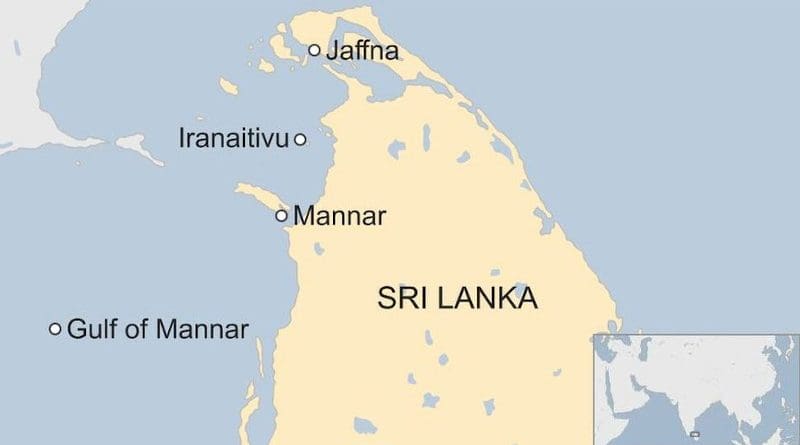Sri Lankan Government Chooses Iranaitivu Island To Bury COVID-19 Dead
The Sri Lankan government has chosen Iranaitivu, an island off the North West Sri Lankan coast, as the sole place to bury those who had died of COVID-19 if their families want them to be buried and not cremated.
Cabinet spokesman Keheliya Rambukwella said here on Tuesday that it was the Experts Committee on the disposal of the COVID dead which had taken the decision on public health grounds. He denied that the decision was taken on political grounds.
Earlier, there was speculation about the government’s scouting for places all over Sri Lanka which are suitable for locating graveyards for the COVID dead. The speculation raised questions as to whether the Sinhalese communities living around these graveyards-to-be would allow COVID bodies to be interred in their habitat. This was because the government had been saying for a year that burial of the COVID dead could contaminate ground water.
Spokesman Rambukwella said that there would be only one burial ground for the COVID dead and that would be in Iranaitivu island. Asked about the difficulties that the resident population (about 400 families of Tamil fisher folk) would face if the water was contaminated, he said that water might be brought from outside as the groundwater might be salty and not potable anyway.
Asked who would bear the expense for carrying bodies from different parts of Sri Lanka to Iranaitivu, which off the northern most Sri Lankan coastline, Rambukwella said all expenses would be borne by the government.
Iranaitivu
Iranaitivu is a double island, with two parts joined by a neck of land. The name means “the twin islands”. Periyativu or Iranaitivu North is one of them and the other is Sinnativu or Iranaitivu South. It is in the Gulf of Mannar in north west Sri Lanka and is part of Kilinochchi District in the Northern Province.
Iranaitivu has historically been inhabited by mostly Catholic Tamil fishers. There are Catholic churches on both islands – Our Lady of Rosary on Periativu and St. Sebastian’s on Sinnativu.
During the 30 year separatist war, the islands saw military conflict and have been under naval occupation since 1992. But it was from these islands that, on 29 September 1998, a civilian Lionair Flight 602 was shot down by the Liberation Tigers of Tamil Eelam (LTTE) with a SAM missile.
The island was de-populated during the war. The people (about 400 families) were allowed to return only in April 2018.
By February 2019, the navy had rebuilt the church on Periyativu, constructed a jetty and paths, and provided water. Solar-powered batteries to recharge mobile phones were donated, and residents had begun restoring wells.
But still there is a lack of power and inadequate drinking water. Many residents live on the island only part of the week.
The navy retains 9 acres of land on which it continues to operate a base, to control illegal fishing by Indians and drug smuggling.
It is not clear if the residents will allow the burial of the COVID-19 dead in their midst in the context of the fact that in other parts of Sri Lanka resistance was expected due to government propaganda about the dangers that COVID dead bodies could pose to public health.

